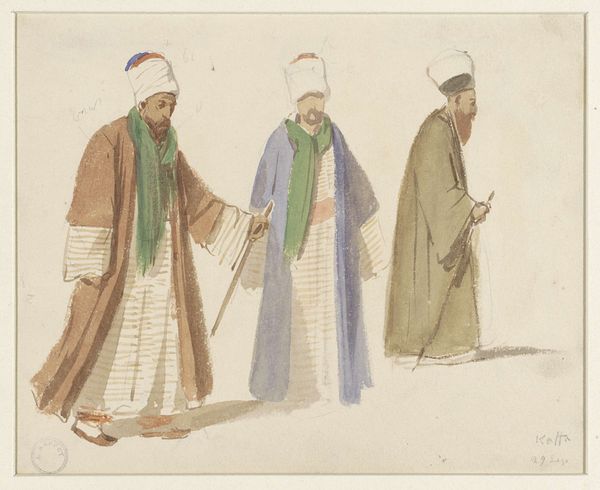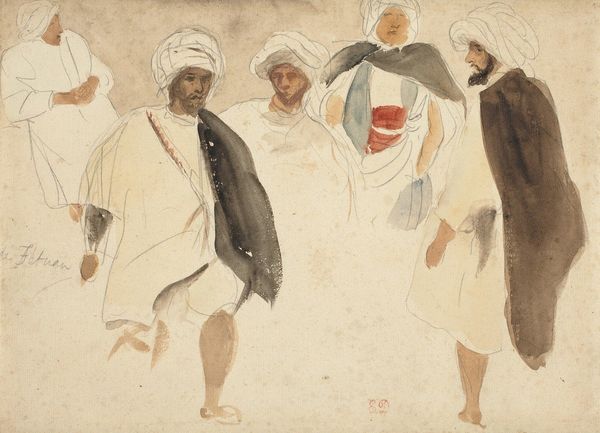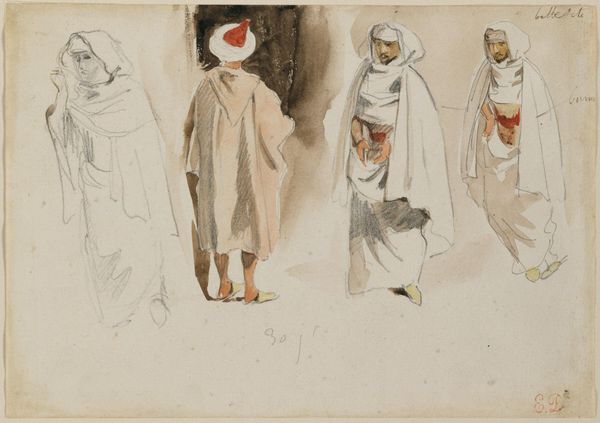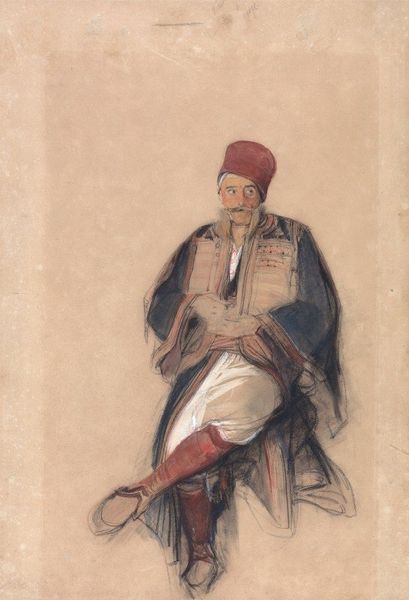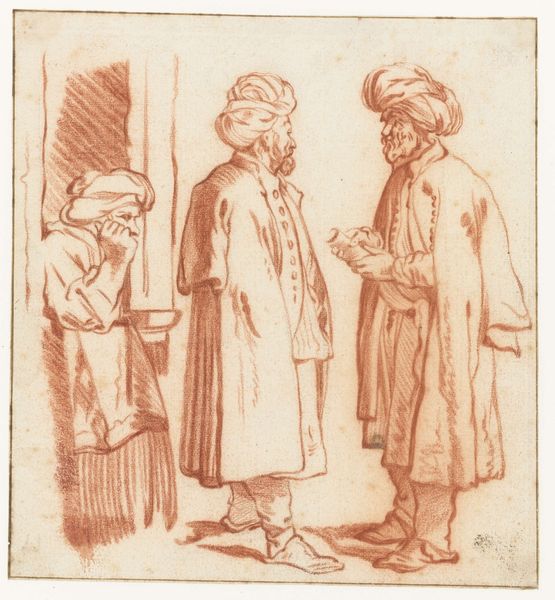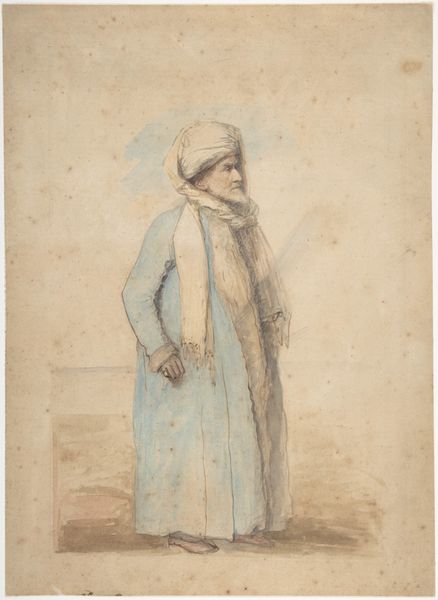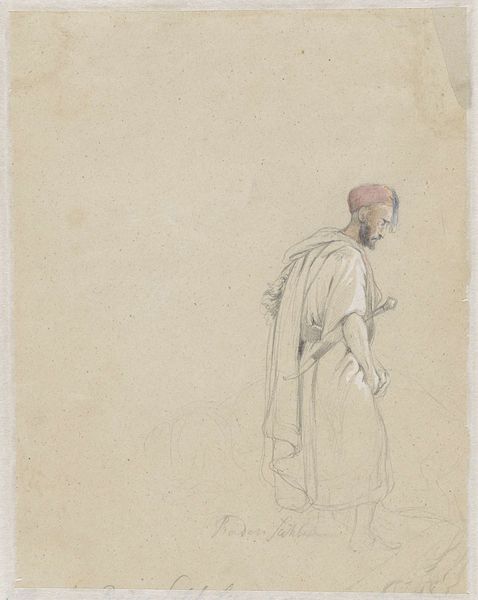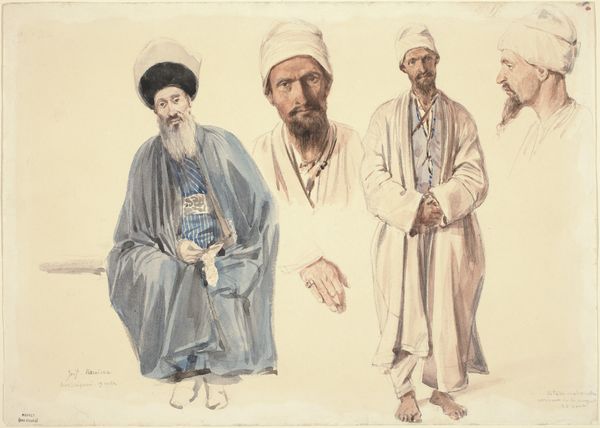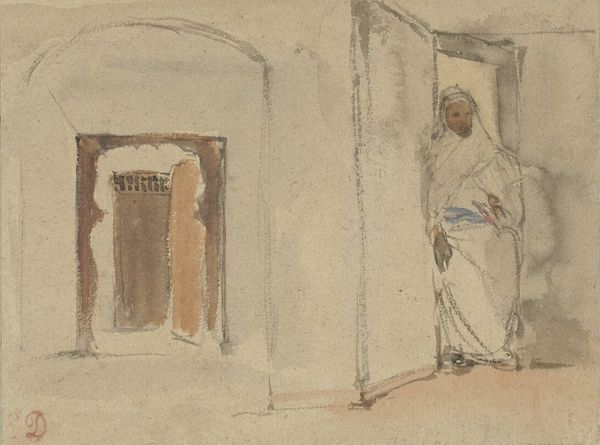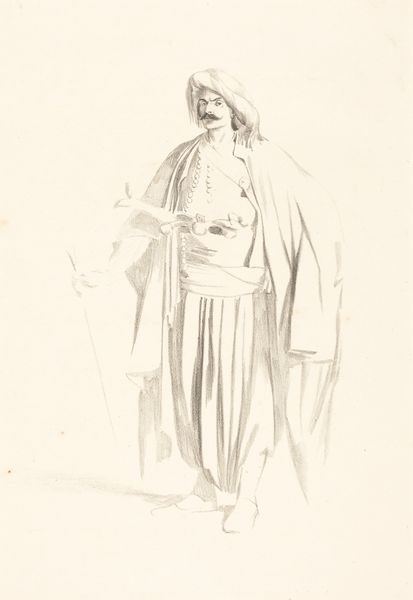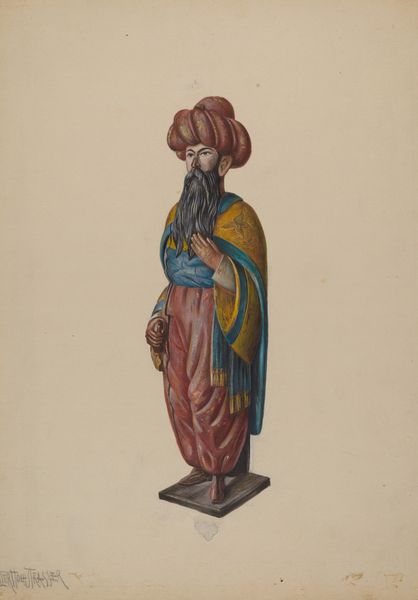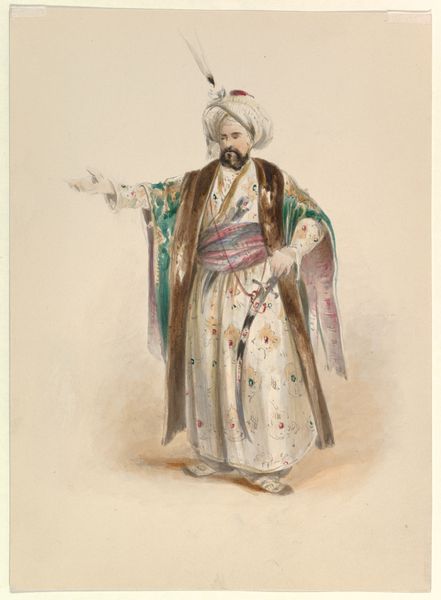
painting, watercolor
#
portrait
#
figurative
#
painting
#
watercolor
#
orientalism
#
portrait drawing
#
watercolour illustration
#
genre-painting
#
watercolor
Copyright: Public Domain: Artvee
Editor: Here we have John Frederick Lewis’s watercolour, “Sheik Hussein Of Gebel Tor And His Son.” There's an almost photographic quality to the realism of the figures, and I am struck by the contrast between the detail in their faces and clothing and the vagueness of the background. What stands out to you? Curator: The cultural memory embedded in this image is quite rich. Lewis was a key figure in the Orientalist movement. Note the deliberate detail he lavishes on their attire and weaponry; those details speak of status and power. Consider the scimitar – not merely a weapon, but a symbol of leadership and authority. The father’s firm gaze speaks to the weight of responsibility, echoed but softened in the son’s averted gaze. Do you notice how their postures tell a story? Editor: Yes, now that you point it out, it’s clear the father is presented as stoic and authoritative, while the son is almost…apprehensive? Is this perhaps a commentary on tradition and inheritance? Curator: Precisely! The imagery implies not just a bloodline, but a lineage of duty. The sheik’s turban, the cut of his robe – all are deliberate visual cues that construct an image of nobility. It evokes a very specific narrative. What assumptions does that visual language ask the viewer to make? Editor: That's a very useful way to frame it. I was initially caught up in the visual accuracy of the depiction, but I can now recognize how the symbolism tells its own distinct story. Curator: Exactly. Recognizing those symbolic gestures within the work enables us to access the depth of cultural meaning the artist has invoked. Editor: Thank you, I'll be sure to examine how artworks speak through symbols in my future studies.
Comments
No comments
Be the first to comment and join the conversation on the ultimate creative platform.
